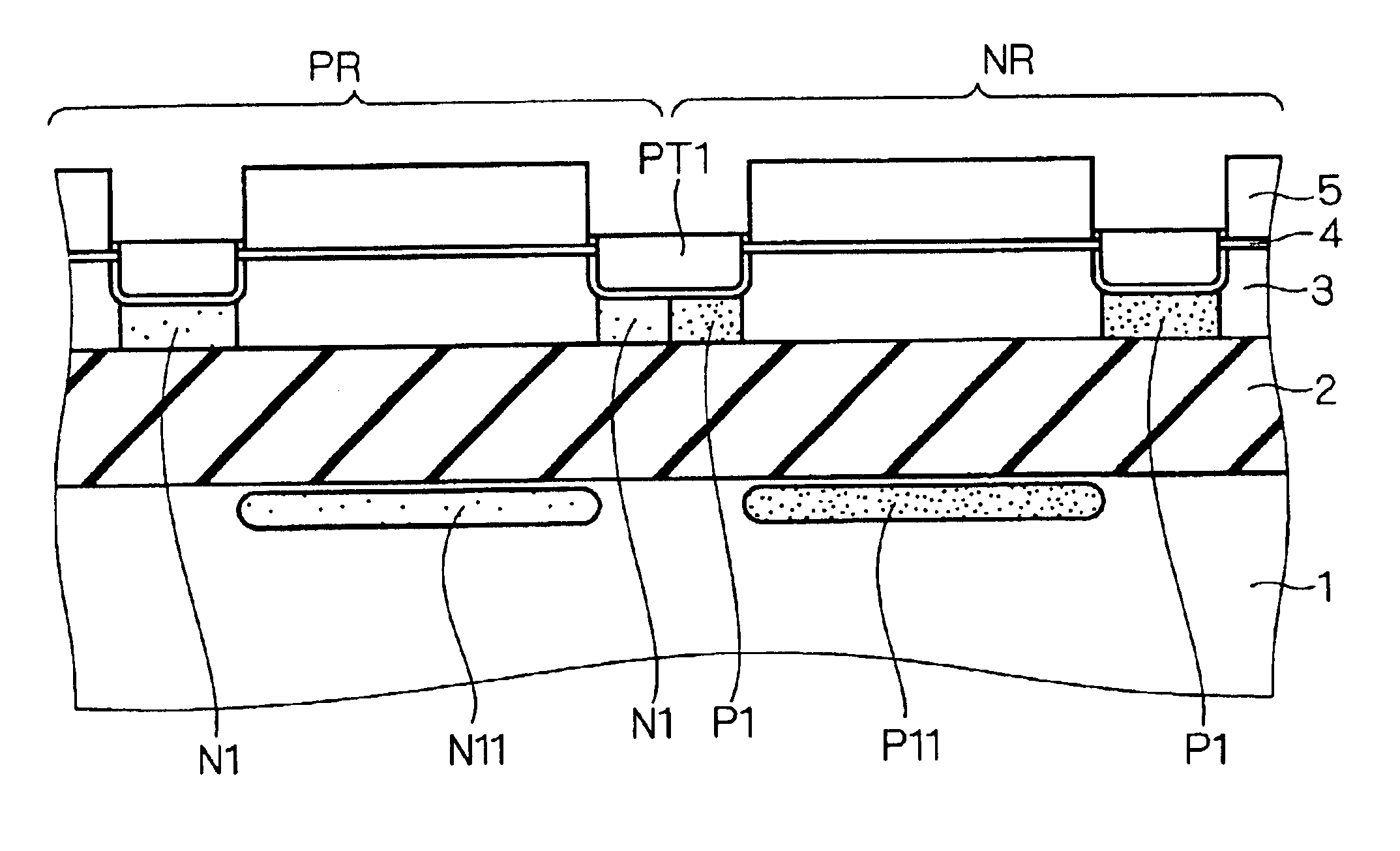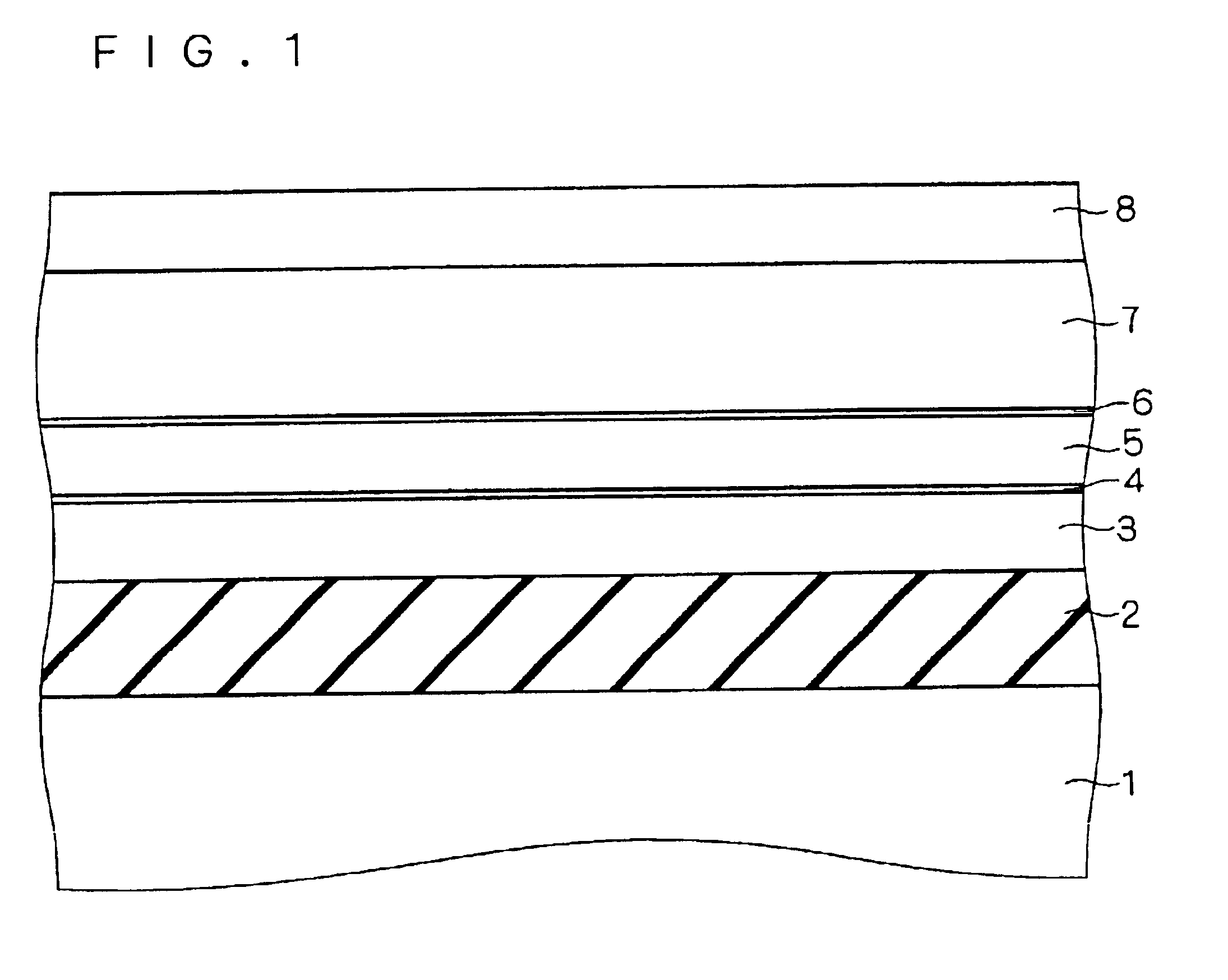Semiconductor device having a trench isolation and method of fabricating the same
a semiconductor device and trench isolation technology, applied in the field of semiconductor devices, can solve the problems of deterioration of operation breakdown voltage resistance, frequency dependence of delay time, heat treatment after implanting impurities, etc., and achieve the effect of preventing deterioration of transistor characteristics
- Summary
- Abstract
- Description
- Claims
- Application Information
AI Technical Summary
Benefits of technology
Problems solved by technology
Method used
Image
Examples
first embodiment
A. First Embodiment
A-1. Fabricating Method
With reference to FIGS. 1 to 13 as cross sections for sequentially showing a fabricating process, a fabricating method of a first embodiment according to the present invention will be described.
First, as shown in FIG. 1, by the SIMOX method for forming a buried oxide film 2 by oxygen ion implantation, bonding, or the like, an SOI substrate constructed by a silicon substrate 1, a buried oxide film 2, and an SOI layer 3 is prepared. The SOI substrate may be formed by a method other than the above methods.
Usually, the film thickness of SOI layer 3 is 50 to 200 nm, and the film thickness of buried oxide film 2 is 100 to 500 nm. On the SOI substrate, a silicon oxide film (hereinafter, called an oxide film) 4 having a thickness of 10 to 30 nm (100 to 300 Å) is formed by CVD (with a temperature condition of about 800° C.) or thermal oxidation (with a temperature condition of 800 to 1000° C.).
After that, a polycrystalline silicon film (hereinbelow, ...
second embodiment
B. Second Embodiment
Although the configuration of performing the channel stop implantation through the partial isolation oxide film having a large isolation step is used in the first embodiment, channel stop implantation may be also performed by a method described hereinbelow.
B-1. Fabricating Method
With reference to FIGS. 14 to 20 as cross sections for sequentially showing a fabricating process, a fabricating method of a second embodiment according to the present invention will be described. The same components as those in the first embodiment described by referring to FIGS. 1 to 13 are designated by the same reference numerals and their description will not be repeated.
First, as shown in FIG. 14, oxide film 4 is formed on an SOI substrate.
A polysilicon film 21 having a thickness of 5 to 300 nm (50 to 3000 Å) is formed on oxide film 4 by CVD. A nitride film 22 having a thickness of 100 to 200 (1000 to 2000 Å) is formed on polysilicon film 21 by CVD. Oxide film 4, polysilicon film 21...
third embodiment
C. Third Embodiment
In the second embodiment, the configuration of performing channel stop implantation in a state where polysilicon film 21 and nitride film 22 are left on active region AR has been described. The channel stop implantation may be also carried out by a method described hereinbelow.
C-1. Fabricating Method
With reference to FIGS. 22 to 27 as cross sections for sequentially showing a fabricating process, a fabricating method of a third embodiment according to the present invention will be described. The same components as those in the first and second embodiments described by referring to FIGS. 1 to 13 and FIGS. 14 to 20 are designated by the same reference numerals and their description will not be repeated.
First, by performing the processes described with reference to FIGS. 14 to 17, oxide film OX2 in trench TR2 and removing oxide film OX2 on nitride film 22 and nitride film 22 by CMP. As shown in FIG. 22, the main surface of polysilicon film 21 can be exposed.
After tha...
PUM
 Login to View More
Login to View More Abstract
Description
Claims
Application Information
 Login to View More
Login to View More - R&D
- Intellectual Property
- Life Sciences
- Materials
- Tech Scout
- Unparalleled Data Quality
- Higher Quality Content
- 60% Fewer Hallucinations
Browse by: Latest US Patents, China's latest patents, Technical Efficacy Thesaurus, Application Domain, Technology Topic, Popular Technical Reports.
© 2025 PatSnap. All rights reserved.Legal|Privacy policy|Modern Slavery Act Transparency Statement|Sitemap|About US| Contact US: help@patsnap.com



